The Focus overhaul brought chiselled styling, slick infotainment and enhanced handling. All it needs now is buyer interest.
In an industry where success is supposedly all about the product, Ford's Focus is the exception to the rule.
Despite a comprehensive mid-2015 overhaul, which made an already good car even better, the Focus finished the year in deep trouble, recording a sales dive of 53 per cent. That was the worst performance of any model in the Melbourne Cup-sized small car field, where Toyota's Corolla finished with class honours and the title of Australia's top-selling car.
Now powered by a hi-tech, fuel-efficient 1.5-litre turbo four, dubbed Ecoboost in Ford-speak, the Focus also has top-tier safety, multimedia and handling credentials. So where, and why, has it gone so wrong?
Design
If it looks European, we usually like it. Except when it's designed by Ford of Europe, apparently.
So Ford has reached for the chisel to sharpen the Focus for 2016, especially the front end, which gets a much more aggressive profile. This is in line with the company's One Ford global look, already applied to the Fiesta and Mondeo.
The dated, complicated button-fest of the previous cabin has been tidied up. The dash still lacks the elegant simplicity of VW's Golf.
In town it operates with the refinement and responsiveness of a bigger engine
That said, there's also genius here, including MyKey, which allows you to program safety features such as a speed limiter and non-negotiable traction control into the key you give to teens when they drive the car.
Add to that Sync2, Ford's superb multimedia setup with eight-inch screen, voice activation that actually understands what you're saying and automatic emergency assistance dialling, via your paired smartphone, in a crash.
Fit, finish and materials quality on the Thai-built Focus also have been improved for 2016 but it's still not quite up to Golf or Mazda3 standards.
About town
The 1.5 is tuned to do its best work at low to mid-range revs, so in town it operates with the refinement and responsiveness of a bigger engine. Unusually for a European turbo, it's happy on regular unleaded.
The six-speed auto (standard on Trend sedan, Titanium hatch and sedan; a $2000 option on Trend and Sport hatch) is a vast improvement over the erratic dual clutch Powershift box on the previous model. It goes early for the higher gears, which is fine because the engine can pull them without drama.
Our Titanium test car wore low-profile tyres on 18-inch alloys, so the low-speed ride was firm. Trend spec, with 16-inch alloys and taller, more absorbent tyre sidewalls, would be more comfortable.
Only the Titanium includes city-smart safety tech such as automatic braking, rear cross traffic and blind spot alerts, automatic reverse and parallel parking and 360-degree obstacle detection.
On the road
The Titanium has a supportive GT-style seat with generous padding and bolstering that will keep you in excellent shape on a 1000km drive.
It's certainly the sportiest, most enjoyable small hatch to hustle through a set of corners
The 1.5 cruises quietly and Ford has put extra noise insulation in the doors, floor and front wheel arches, so the 2016 Focus is as hushed as a big sedan at highway speeds.
Ford of Europe always engineers engaging dynamics into its cars and the Focus, one of the better handlers in small car territory, now tussles with the Golf for best-in-class status. It's certainly the sportiest, most enjoyable small hatch to hustle through a set of corners.
Electric power steering, though a touch synthetic, is precise and intuitive.
Performance
The 1.5-litre works efficiently and strongly in everyday driving but a performance engine it ain't. Ford claims 132kW but our test car felt as if 32kW had gone missing.
When the tacho swings past 5000rpm, the turbo can't shove any more air into the cylinders and all you get is an increasingly strained, boomy note, with precious little extra forward progress.
Selecting Sport mode makes virtually no difference, which probably explains the absence of shift paddles on the wheel. There's a silly shift rocker switch on the gear lever; just for decoration, presumably.
The official average is 6.5L/100km; expect fives on the highway and 8.0-10.0L in town.
Ford Focus 2016: Titanium
| Engine Type | Turbo 4, 1.5L |
|---|---|
| Fuel Type | Unleaded Petrol |
| Fuel Efficiency | 6.4L/100km (combined) |
| Seating | 5 |
| Price From | $13,640 - $17,930 |
| Safety Rating |
|
Verdict
If the anodyne Japanese and Koreans in this class don't do it for you, and you're a bit leery about the Golf, the Focus has European engineering and design and is enjoyable to drive, reasonable value and loaded with useful, sharp-end tech.
Why it doesn't sell better than it does is a question only Ford Australia can answer. Or maybe not...
What it's got
Six airbags, MyKey, Sync2 with eight-inch touchscreen, emergency assistance, rear camera, navigation and voice control, rear parking sensors. Titanium adds leather-faced sports seats, automatic parking, 18-inch alloys, dual-zone aircon and front parking sensors.
What it hasn't
Hi-tech safety features on Titanium, such as automatic braking, rear cross traffic and blind spot alert, aren't available on Trend and Sport, even as options.
Ownership
Service intervals are 12 months/15,000km. Warranty is three years/100,000km, which is average. Ford provides upfront scheduled service price information when you get a quote online, a free loan car and 12 months auto club membership with each scheduled service, for up to seven years.
How do you think the Focus Titanium measures up to its Japanese and Korean rivals? Let us know in the comments below.
Click here for more 2016 Ford Focus Titanium price and spec info
Pricing Guides






.jpg)
.jpg)
.jpg)
.jpg)
.jpg)
.jpg)
.jpg)
.jpg)
.jpg)
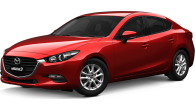

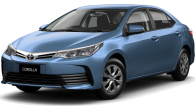
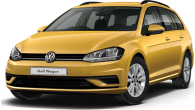













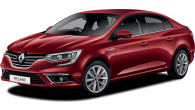

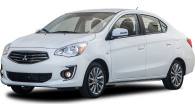






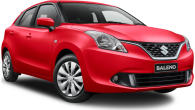





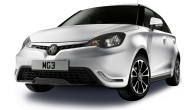


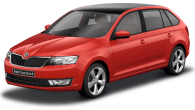


.jpg)
.jpg)


.jpg)